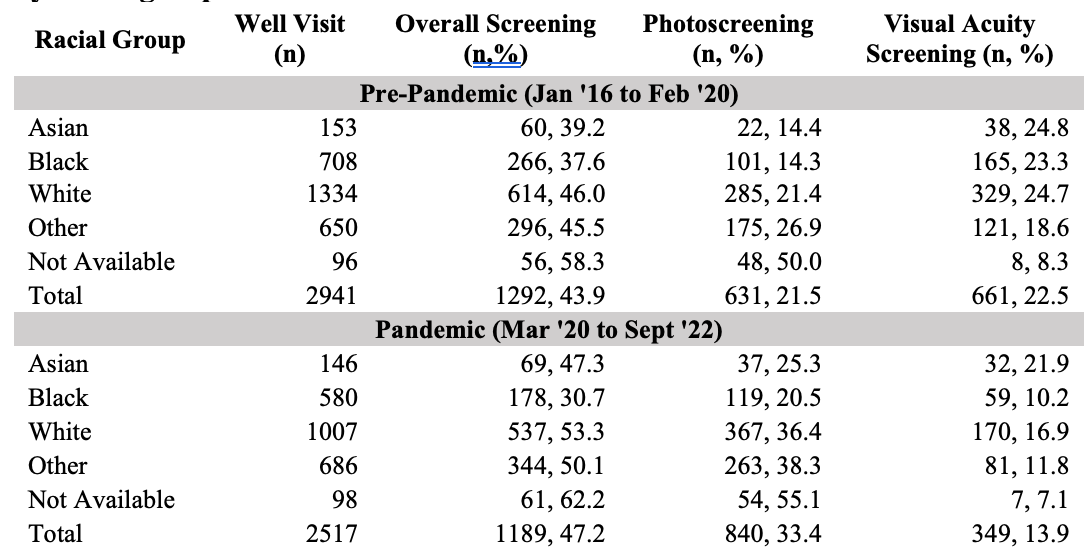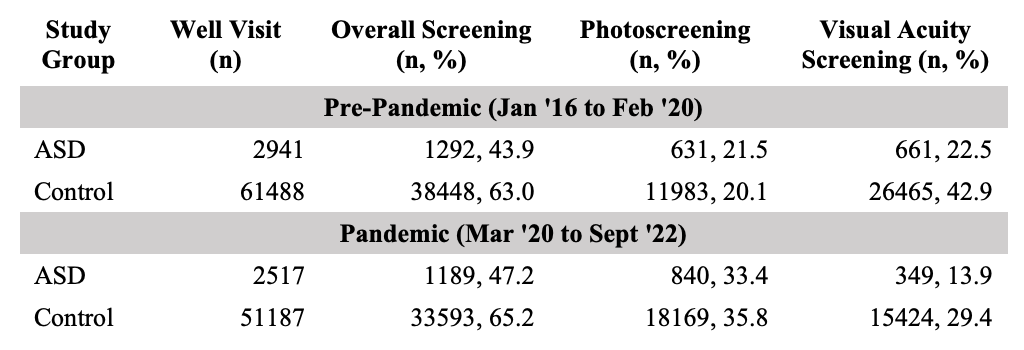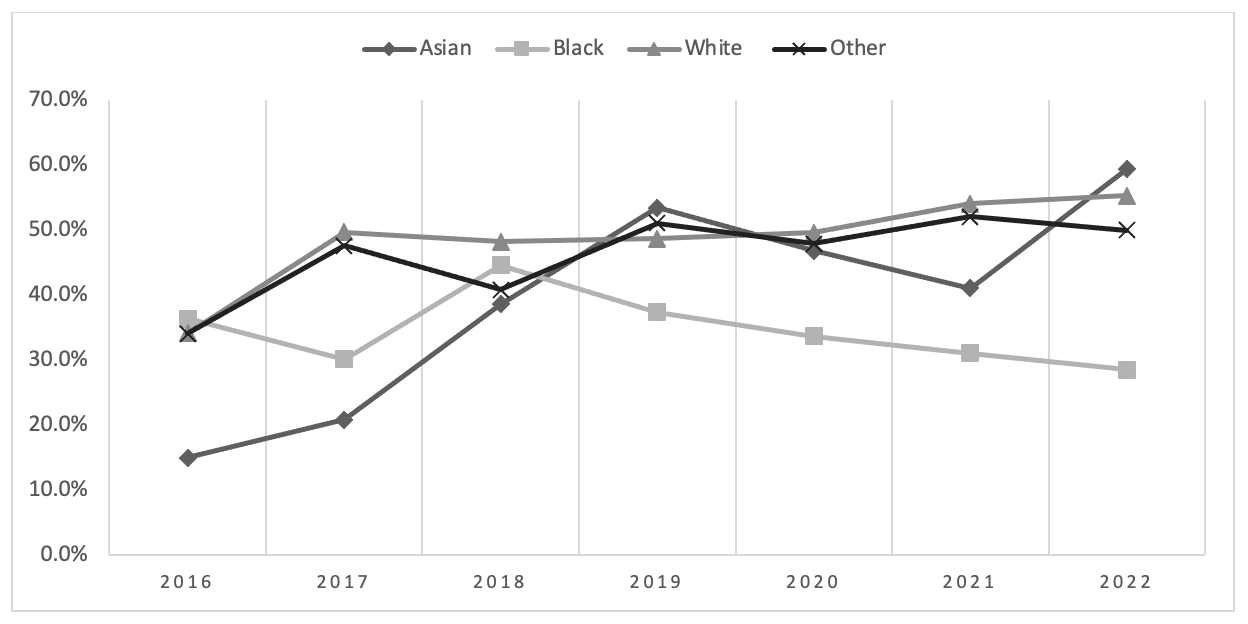Developmental and Behavioral Pediatrics: Autism
Developmental and Behavioral Pediatrics 3
404 - Disparities in Vision Screening in Primary Care for Young Children with Autism Spectrum Disorder and the Effects of the COVID-19 Pandemic
Publication Number: 404.206

Kimberly Hoover, MD (she/her/hers)
Resident
Nemours Children's Hospital
WILMINGTON, Delaware, United States
Presenting Author(s)
Background:
Healthcare disparities exist for children with autism spectrum disorder (ASD). Prior research at our center demonstrates that, before the COVID-19 pandemic, children with ASD have lower rates of vision screening compared to peers without ASD. Furthermore, young Black children with ASD are least likely to receive vision screening at primary care well visits.
Objective:
Analyze the impact of the COVID-19 pandemic on 1) rate of overall vision screening, 2) rate of photoscreening vs. visual acuity screening, and 3) racial disparities in vision screening for children with ASD.
Design/Methods:
Data from well visits for 3- to 5-year-olds between January 2016 and September 2022 were collected via PEDSnet for our institution’s two geographic regions. Data was separated into pre-pandemic (Jan. 2016–Feb. 2020) and pandemic (Mar. 2020–Sept. 2022) periods. Children with an ASD diagnosis were included in the study group. Billing codes were used to determine vision screen completion. Chi-square and Student’s t-Test were used for group comparisons and to analyze pre-/pandemic trends.
Results:
There was no statistical significance in overall ASD vision screening rate pre-pandemic vs. pandemic (43.9% vs. 47.2%, P=0.21), but photoscreening increased (21.5% vs. 33.4%, P< 0.001) and visual acuity screening decreased (22.5% vs. 13.9%, P< 0.001). This trend was noted in all demographic categories except Black race and did not vary within groups. Rates of overall vision screening in Black children with ASD steadily decreased from 2018 to 2022 (Figure 1). Pre-pandemic vision screening of this population was greater than pandemic vision screening (37.6% vs. 30.7%, P< 0.05) driven by a significant (P< 0.0001) decrease in visual acuity screening. Rates of vision screening in all other racial groups increased (Table 1). Children without ASD had more vision screening than children with ASD (65.2% vs. 47.2%, P< 0.0001, Table 2). In the control group, Black children had less overall screening (56.3% vs. 49.9%, P< 0.0001) during the pandemic.
Conclusion(s):
The COVID-19 pandemic did not decrease the overall vision screening rate in children with ASD but a disparity for vision screening completion still exists between children with and without ASD. Photoscreening increased and visual acuity screening decreased during the COVID-19 pandemic. Although there was a dramatic decrease in any vision screening during the initial months of the pandemic (late March to May 2020), rates recovered. However, vision screening rates in Black children continued to decrease during the pandemic highlighting a need to reduce disparities in this population.


